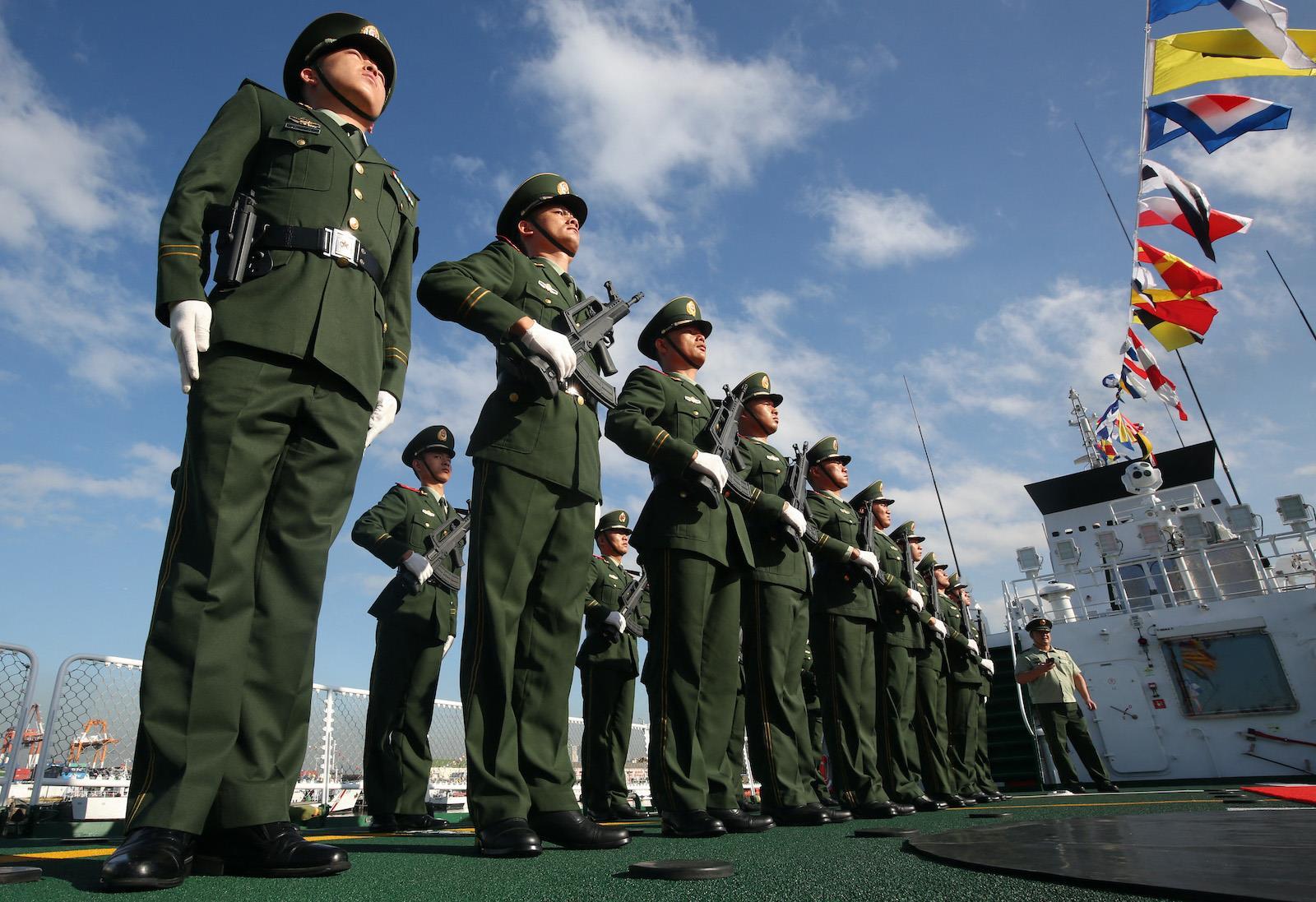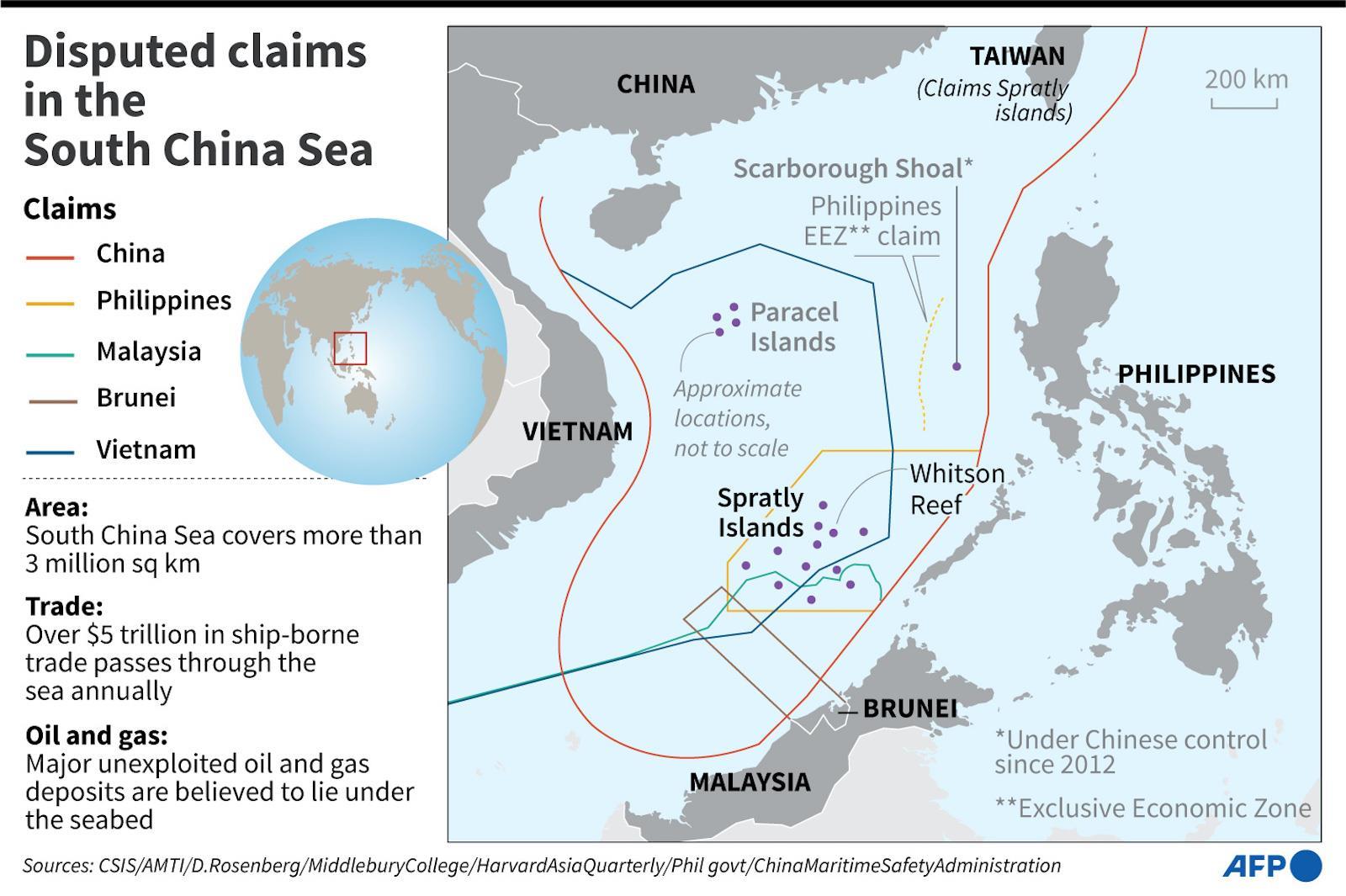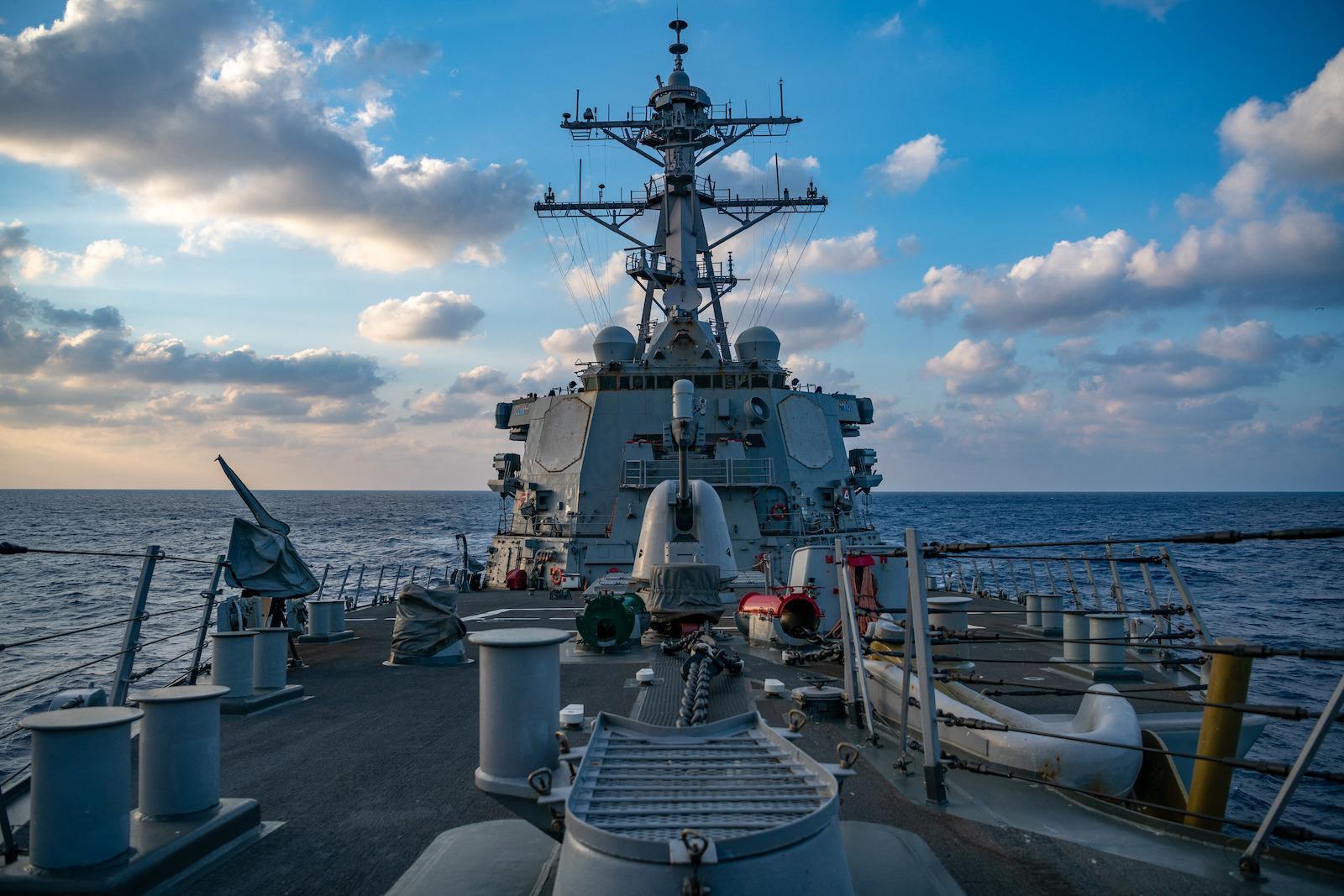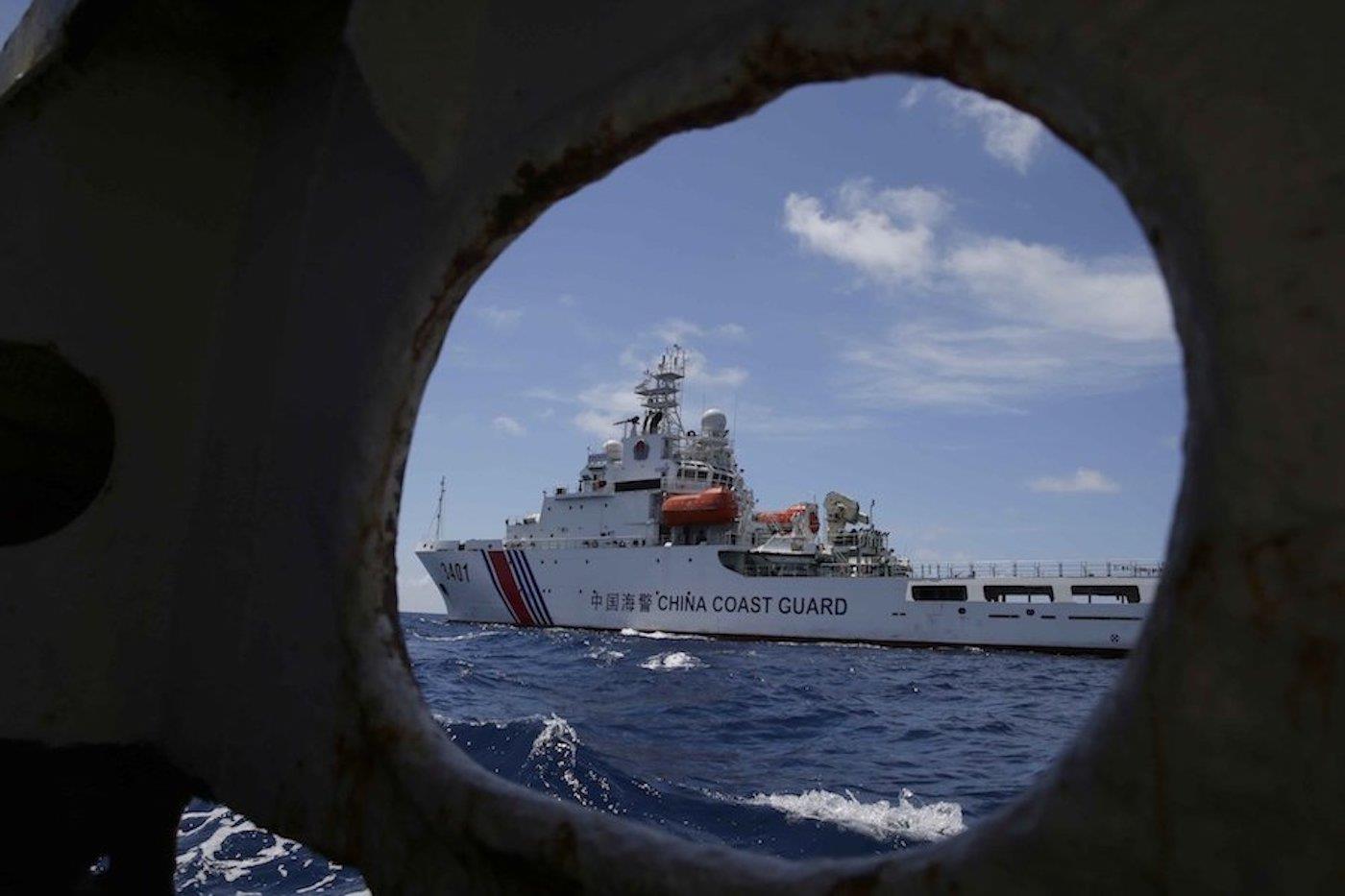
China flexes sea power with new foreign ship law
(MENAFN- Asia Times) A new Chinese legal requirement demands that multiple classes of foreign vessels traversing waters claimed by Beijing must provide detailed information to state authorities and take aboard Chinese pilots.
The new maritime law, which came into legal force today (September 1), threatens to inflame South China Sea disputes pitting China and Southeast Asian nations and stoke already rising tensions with the United States in the contested waters.
On August 27, China's Maritime Safety Administration said in a statement that five categories of foreign vessels, namely submersibles, nuclear-powered vessels, ships carrying radioactive materials, ships carrying bulk oil, chemicals, liquefied gas or other toxic substances, as well as vessels that may endanger China's maritime traffic safety, fall under the law.
Foreign vessels will be required to provide information including their ship names and numbers, recent locations, satellite telephone numbers and dangerous goods, according to the statement.
If their automatic identification systems do not work properly, they will need to report to China's maritime authorities about their locations and speeds every two hours until they leave the country's territorial waters, the statement said.
At face value, these are not necessarily problematic provisions – unless the definition of“Chinese territorial waters” is interpreted to include nearly all of the South China Sea, as claimed in its wide-reaching and hotly contested nine-dash line.
The new rules were first made public on April 29 this year after the Standing Committee of the National People's Congress amended the Maritime Traffic Safety Law (MTSL), which was established in September 1983.
A full English version of the revised law, translated by Peking University Law School, can be seen on the website of Steamship Mutual , a mutual insurance association in the maritime space that provides risk pooling, information and representation.
In April, Xinhua reported that foreign ships found to be potentially hazardous to marine traffic safety would be required to report themselves before sailing through Chinese waters under the revised law. Ships found in violation will be ordered to vacate, the report said.

Members of the Chinese Coast Guard stand in formation on board their vessel after it anchored at Manila port on January 14, 2020. Photo: AFP / Stringer
The state-run Global Times on August 29 that the law was a sign of stepped-up efforts to safeguard China's national security.
Song Zhongping, a TV commentator, told the newspaper that the Maritime Safety Administration had the power to dispel or reject a vessel's entry into Chinese waters if the vessel is found to pose a threat to China's national security.
The report did not name any specific foreign country or sea area that will be affected but analysts say it is clearly aimed at the United States and its allies.
“Submersibles, nuclear-powered vessels and vessels that may endanger the maritime traffic safety of China…it is hard for people not to link them with the military vessels deployed by the United States, the United Kingdom and Japan to the East China Sea, South China Sea and Taiwan Strait,” Wu Fei, an associate professor at China Guangzhou Jinan University, wrote in an article on Monday.
According to the UN Convention on the Law of the Sea (UNCLOS), territorial waters are defined as the 12 nautical miles (22.2 kilometers) of sea extending from terrestrial territory, with the“right of innocent passage” reserved for vessels moving through territorial waters in a manner that does not threaten the security of the coastal state.
But Su Tzu-yun, director of the Division of Defense Strategy and Resources at the Institute of National Defense and Strategic Research in Taiwan, has noted Beijing defined its territorial waters much more broadly to include“internal waters, territorial sea, contiguous zones, exclusive economic zones and continental shelf, as well as other sea areas under its jurisdiction.”
He pointed out that Beijing also amended its Coast Guard Law in February to empower its marine police to use weapons.
According to Chapter VI of the Coast Guard Law, China's Coast Guard officials may use hand-held weapons if a foreign vessel“illegally” enters Chinese claimed waters and refuses to stop after being instructed. Moreover, they may use airborne weapons if China's law enforcement vessels or aircraft come under attack.
It is unclear how aggressively, how widely or indeed whether the new law will be enforced at all, and if so over how wide of a geography.
China claims nearly all of the South China Sea under its nine-dash line, a claim that was rejected by an arbitral tribunal at The Hague in July 2016. Despite those claims, China has not attacked any US Navy vessels that regularly enter the contested maritime region in the name of“freedom of navigation.”

A shipping trade organization based in London that has researched the law and that spoke to Asia Times on condition of anonymity said there is clearly interest in the issue in the shipping industry.
Traditionally, pilots are only taken above when a ship is approaching harbors or when entering nationalized waterways such as the Suez or Panama canals.
But under China's new revisions, pilotage may be required in locations far from Chinese coastal waters – indeed, even in areas claimed by other states.
“Where a vessel voluntarily applies for pilotage, the pilotage institution shall provide pilotage services,” the law states.
Pilots are required on vessels,“navigating, berthing or shifting berths” in“pilotage zones,” the law says.
It's still unknown where China envisages those“pilotage zones.” According to Act 2 of the MTSL, the law applies to“navigation, berthing, operations and other activities relevant to the maritime traffic safety in the sea areas within the jurisdiction of the People's Republic of China.”
An analytical article,“China's Revised Maritime Security Law,” in International Law Studies clarifies the attendant risks in terms of both geographic breadth and Chinese demands.
“The MTSL's scope of application is problematic,” the article states. It does not simply include coastal waters but also sea areas under Chinese jurisdiction, which are“not defined in the law,” and so are“purposely vague.”
According to the article, some clues as to what“seas under jurisdiction” may mean to Beijing can be found in recent Chinese actions in both the South and East China Seas.
Given“China's excessive maritime claims and prior enforcement activities, the MTSL is likely intended to apply to all waters and seabed areas (1) encompassed by the nine-dash line in the South China Sea, (2) extending to the Okinawa Trough in the East China Sea, and (3) beyond Ieodo (Socotra Rock) in the Yellow Sea.”
To contest Chinese forces that have built-up and militarized a number of reefs, islets and man-made islands in the South China Sea, US warships have carried out Freedom of Navigation Operations, or FONOPs – i.e. approaching within 12 nautical miles of these features.

The Arleigh-Burke class guided-missile destroyer USS Barry conducts operations in the South China Sea in 2020. Photo: AFP / Samuel Hardgrove / US Navy
US vessels have also defied Chinese anger and made frequent transits of the sensitive Taiwan Straits.
Warships of other nations – Australia, France, Japan, the United Kingdom – have recently challenged Chinese dominance in the South China Sea, albeit less aggressively than their American counterparts.
The Okinawa trough in the East China Sea is a flashpoint between China and Japan, and has been the focus of multiple, tense fishing fleet and coast guard clashes, notably in the area of the Japanese-administered, Chinese claimed Senkaku/Diaoyu islands.
The Ieodo Reef is claimed by both South Korea and China, but has been the subject of less tension than the above-mentioned areas.
While the MTSL's possible application in waters that few countries recognize as Chinese may be worrisome, Article 30 could feasibly become a casus belli.
“Given the scope of application of the MTSL, Article 30 is highly problematic in that it imposes mandatory pilotage requirements,” the International Law Studies article states.
“Compulsory pilotage is normally associated with ports and internal waters as a condition of port entry. It is inconsistent with international law, including Article 24 of UNCLOS to require compulsory pilotage for foreign ships engaged in innocent passage that do not intend to enter the coastal state's ports or internal waters. Such a requirement would have the practical effect of denying or impairing the right of innocent passage.”
Still, there are contrasting opinions.
The London-based shipping organization was far less concerned than the report writer; having researched the issue since early in the year, it suggested that the pilotage demands are, in fact, largely restricted to normal global practice.
“It looks like a bit of a non-starter,” the source told Asia Times.“For this to occur, as suggested, it would need China to designate its entire Exclusive Economic Zone as a compulsory pilotage zone, which seems very far fetched.”
Still, the range of vessels potentially impacted include the fleet of oil tankers, LNG carriers and chemical-carrying vessels that service the fuel-thirsty manufacturing sectors of Taiwan, South Korea and Japan.
According to charts of regional sea lanes consulted by Asia Times, the key route from the Gulf to Taiwan, South Korea and Japan runs through the Malacca Strait and thence through the South China Sea.
China already fields the region's largest naval fleet complete with aircraft carriers. It also deploys a deniable“maritime militia” of weaponized fishing fleets it has used in recent months to harass rival claimants in the South China Sea, including the Philippines.

This photo taken by the Philippine Coast Guard shows Chinese vessels anchored at the Whitsun Reef 175 nautical miles west of Bataraza in Palawan in the South China Sea. Photo: AFP
None of these assets are in the business of enforcing maritime traffic and safety laws. However, recent indications are that Beijing is preparing the specific tools needed to administer the MTSL.
In April, Japan's Nikkei Asia Review reported that the MTSL's enforcement body, the Maritime Security Administration, is currently building a series of dedicated patrol vessels.
According to trade website Ship Technology the first of these vessels, the Haixun 09, was launched in Guangzhou in September.
At 165 meters long and displacing 10,700 tons, it comes complete with a helicopter landing pad. With a range of 18,520 kilometers, it can undertake voyages of over 90 days, making it capable of ranging far beyond Chinese coastal waters.
“China is currently planning to expand the maritime patrol fleet to undertake long-range, deep-sea operations,” Ship Technology reported.

Legal Disclaimer:
MENAFN provides the
information “as is” without warranty of any kind. We do not accept
any responsibility or liability for the accuracy, content, images,
videos, licenses, completeness, legality, or reliability of the information
contained in this article. If you have any complaints or copyright
issues related to this article, kindly contact the provider above.

















Comments
No comment